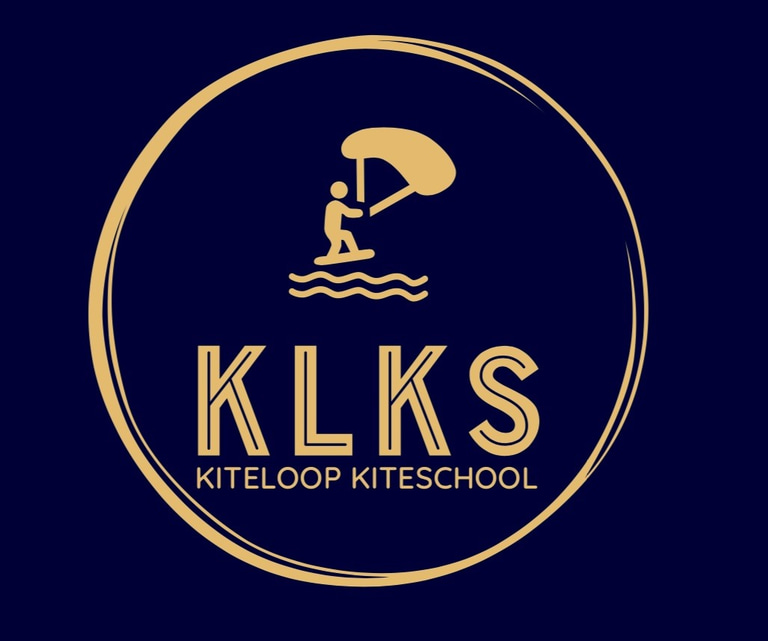Our Home-Spots
Spot Description Mangue Seco – The Ideal Training Spot near Jericoacoara
Mangue Seco is located about 4 km northwest of Jericoacoara and can be reached by 4x4 vehicle in approximately 8 to 10 minutes. At high tide, the route must go around the dunes, which can extend the drive to about 15 minutes. The spot is situated in a sheltered bay, providing especially calm water conditions.
WIND AND WATER CONDITIONS
Wind direction: Consistent side-shore from the right (typical for the season)
Wind strength: 25 to 30 knots
Tide-dependent:
At low tide and mid-tide, the water is almost mirror-flat and very shallow
The beach becomes very wide – ideal for setup, launching, and safe training
PERFECTLY SUITED FOR
Beginners: One of th best spots to have your first lessons ever! The side-shore wind and easy access to the water is unmatched in Jericoacoara. Optimal conditions with plenty of space for first water starts, controlled rides, and safe learning of the basics.
Intermediates: Excellent environment to improve jumps, transitions, upwind skills, and to learn new kite maneuvers.
Instructors: Always direct access to students, allowing quick intervention (if needed) and efficient teaching. Moreover easy access to the entry and exit point for the students of the teaching-area.
NOTES
The beach is regularly used by vehicles. Especially at high tide, space outside the water can become limited in some areas – caution is advised.
Mangue Seco is our preferred training spot – it combines maximum safety with rapid learning progress. The spot offers ideal, easy, and straightforward conditions for developing new kitesurfing skills
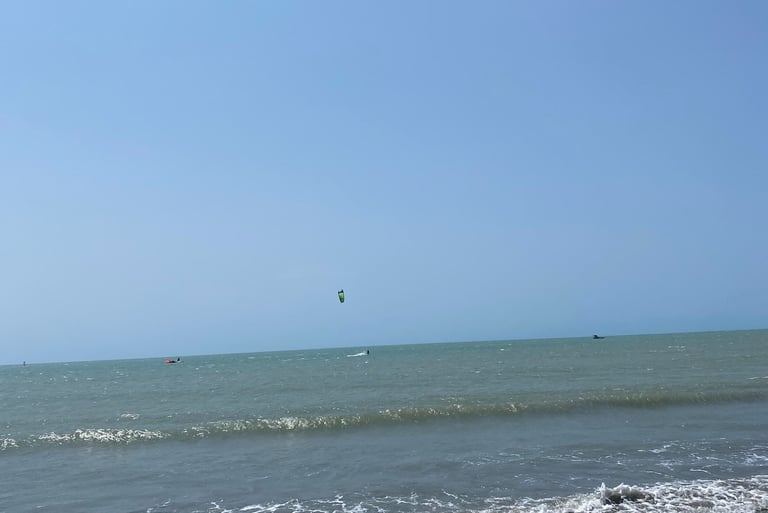

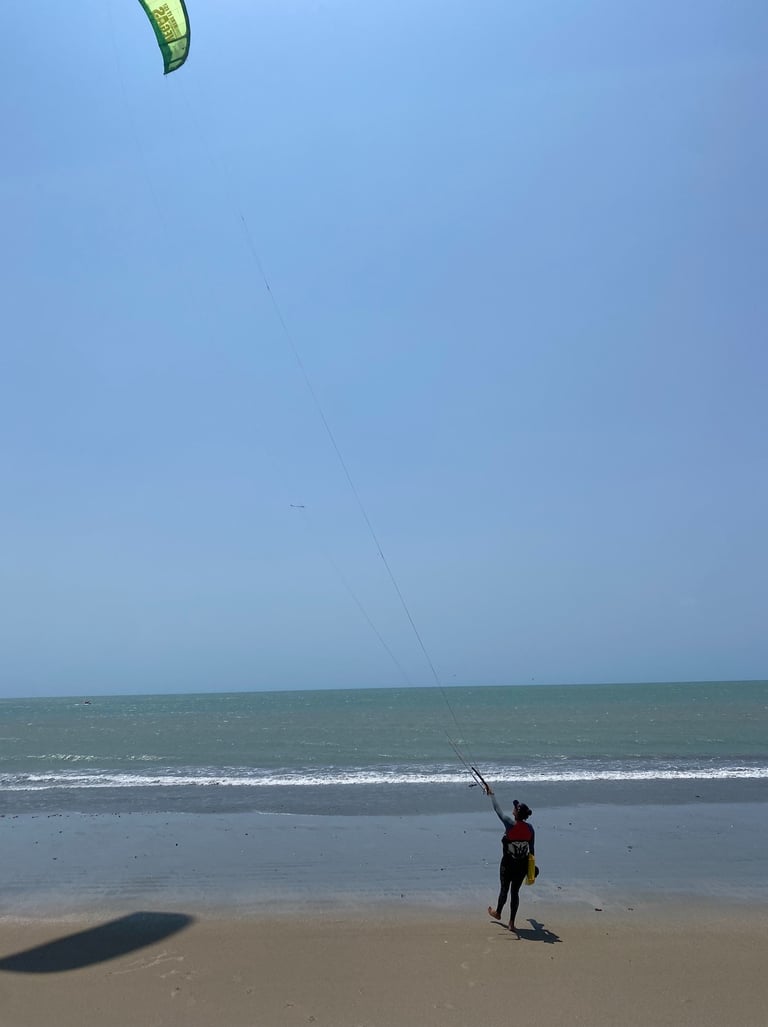

Impressions - Spot "Mangue Seco"
________________________________________________________________
Spot Description: Guriú before the ferries – “Freerider’s Paradise 2.0”
Guriú before the ferries is a versatile and underrated kite spot located slightly upwind (5–10 minutes riding) of the main channel – exactly where the cars turn left towards the ferry. This area faces the sea and offers large shallow, mirror-flat water sections, small pools, and regular swell waves further out. Thanks to the open water surface, consistent wind, and easy accessibility, this spot is excellent for freeriders as well as for students and lessons.
WIND AND WATER CONDITIONS
Wind direction: Side-shore from the right – typical and stable for the region
Wind strength: Consistent, strong, perfect for lessons, freeride, and big air
Water depth: Depending on tide, ankle- to hip-deep with large flatwater zones and calm pools
Further out you will find regular swell waves, ideal to use as natural kickers – especially upwind of the spot
SPOT CHARACTERISTICS
Large water surface with significantly fewer kiters compared to the main spot after the ferry
Relaxed and calm vibe, ideal for anyone who needs space – for tricks, practice, or just enjoying
The spot ends abruptly downwind, as the beach stops and only the river with mangroves continues – upwind ability is therefore important
A small, shallow side channel lies slightly upwind of another spot (Guriu after the ferries) described below, offering butter-smooth water – without current
LESSONS & BEGINNER FRIENDLINESS
Along with Mangue Seco, this spot is one of our absolute favorites for teaching
Less kite traffic, shallower and calmer water – much more relaxed for both students and instructors compared to the main spot
The wide, flat pools provide safe conditions for learning, first rides, transitions, and controlled water starts
At very low tide, contact with the ground is possible – our instructors carefully choose the training zones accordingly
ACCESSIBILITY & LOGISTICS
One of the main advantages of Guriú before the ferries besides less traffic on the water:
The transfer is more direct and faster, as no ferry crossing is required
This not only saves time on the way there – the return to Jericoacoara is also easier
Especially during high season, the ferry can cause short waiting times on the way back – this situation does not exist here
Students, guests, and team members get to the water quicker and return to Jeri earlier
SAFETY NOTES
Downwind, the spot ends rather abruptly: if you drift too far downwind, you end up in open but shallow water (low to mid tide) without beach access (only across the river and mangroves as an exit, not too comfy)
Return is then only possible by riding upwind or by continuing on a downwinder to the next spot (Guriú after the ferries)
As always: local knowledge and awareness are important – especially with changing tides and sunlight conditions. After noon and near sunset, visibility decreases in that direction due to reflections on the water surface.
CONCLUSION
Guriú before the ferries is a true insider tip: spacious, less crowded, technically excellent, from kicker-waves to flat pools. More accessible than the well-known channel spot more downwind. Less traffic, better overview, more space, and ideal conditions for both lessons and advanced freeriding make this section one of our favorite and most strategic spots around Jericoacoara. If you want to kite stress-free, effectively, and with plenty of room – this is the place to be! Preferably at low-tide or mid-tide.
________________________________________________________________
Spot Description: Guriú after the ferries – “Freeriders’ Paradise”
Just about 12 to 15 minutes from Jericoacoara, depending on the tide, lies Guriú – a true paradise for freeriders. The journey is by 4x4 and includes crossing a small river ferry to reach the heart of the spot around the mangroves and river mouth.
WIND AND WATER CONDITIONS
Wind direction: Predominantly side-shore to side-onshore, depending on the location in the lagoons also onshore or occasionally offshore
Wind strength: Consistent and strong – ideal for freeride, big air, and technical training
Water depth: Depending on the tide, ankle- to hip-deep, with many natural flatwater pools (“bathtubs”) – especially up- and downwind of the river mouth
SPOT CHARACTERISTICS
The Guriú channel is the center for experienced kiters, especially big air riders who perfect their jumps there
Nevertheless, the spot offers plenty of space away from the channel (upwind and downwind), with numerous mirror-flat areas
In addition, depending on tide, gentle to impressive swell waves can form in certain areas – ideal as natural kickers for controlled jumps and tricks
Wind conditions are almost always stable – perfect for long sessions
LESSONS & BEGINNER FRIENDLINESS
Guriú is also excellent for lessons and beginners or progressing riders:
The water is shallow and calm in many places. In the channel, mild currents can occur around mid tide (regardless of rising or falling tide, since the water level change per time unit is then strongest)
Our lessons rarely take place in the channel itself, but rather in calm pools outside the channel with sufficient space
Instructors carefully choose the training zones to ensure maximum safety and space for studentsImportant to note:
At very low tide, some areas may become too shallow
In case of crashes or uncontrolled starts, there is a chance of contact with the ground
Our experienced instructors, however, adapt the training zones to minimize this risk as much as possible
SAFETY NOTES
Be cautious in shallow water: always check depth before jumps and landings
In the channel, depending on the tide, there may be currents that can matter if you lose your board
Especially in high season, the channel is busy – mutual respect is essential, as right-of-way rules are not always observed, especially in the big air area
CONCLUSION
Guriú after the ferries is a top spot for both experienced freeriders and motivated beginners. The combination of flatwater, consistent wind, generous space, and the know-how of our instructors makes this spot one of the most versatile and popular in the region.
Impressions "Guriu after the ferries"
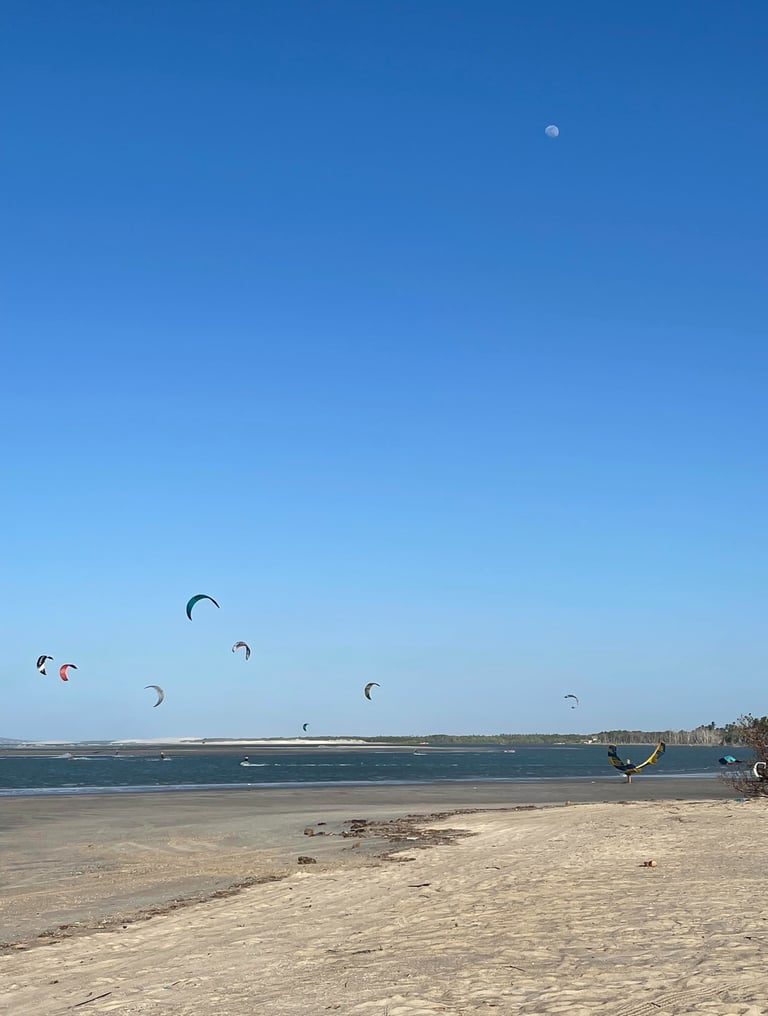

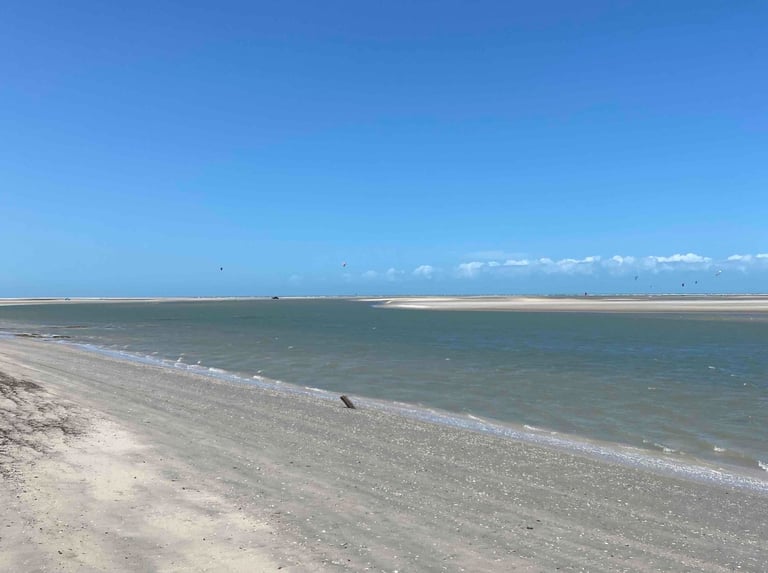

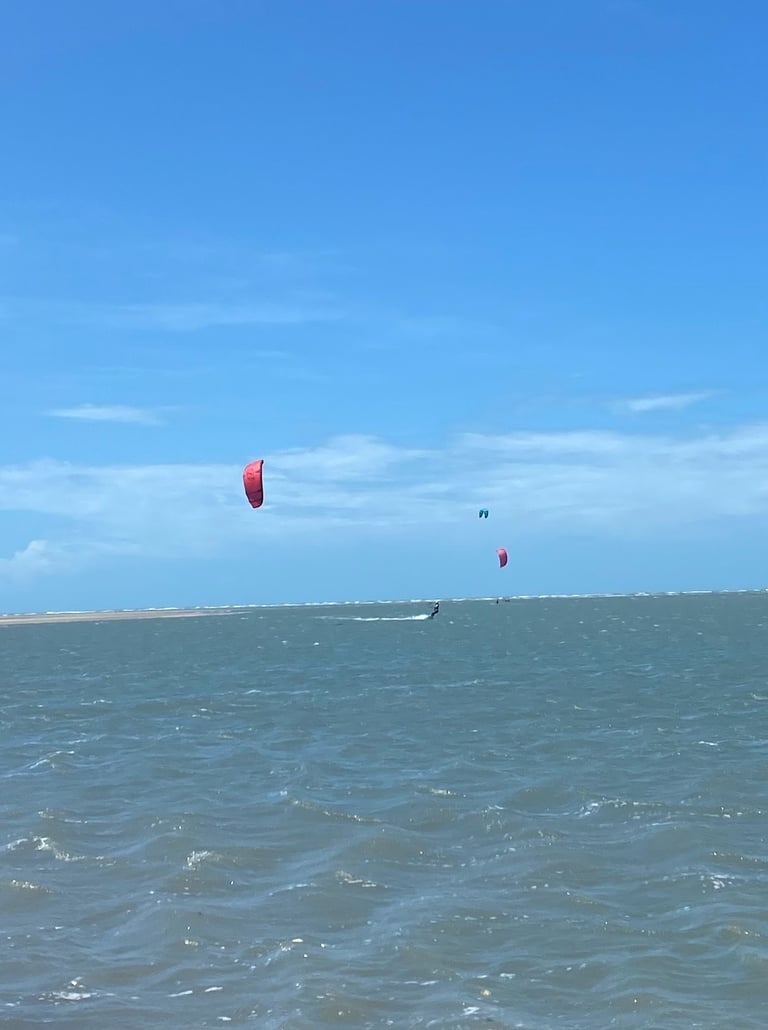

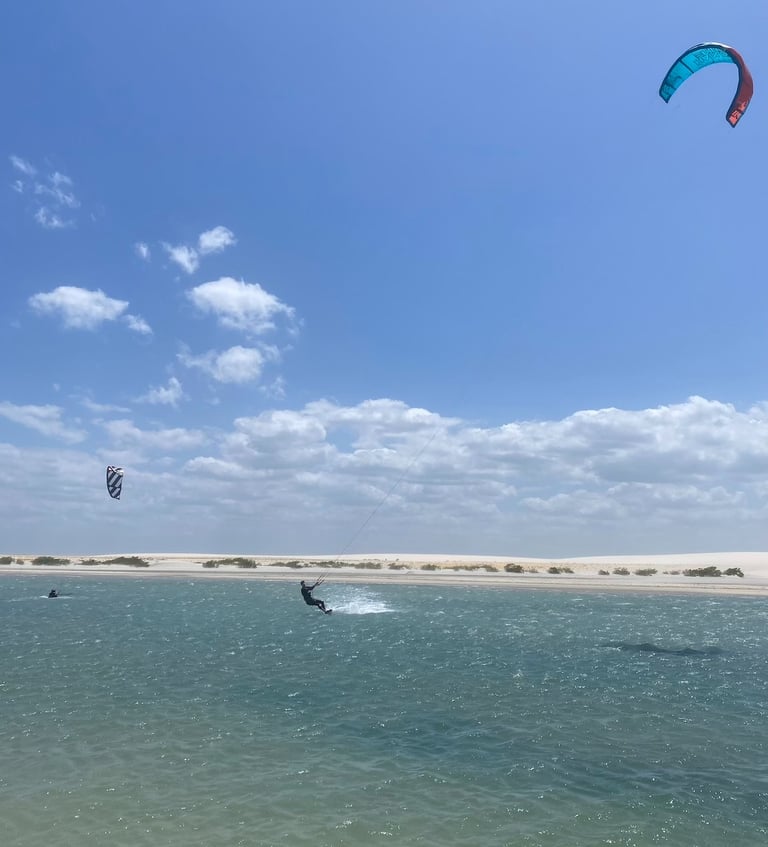

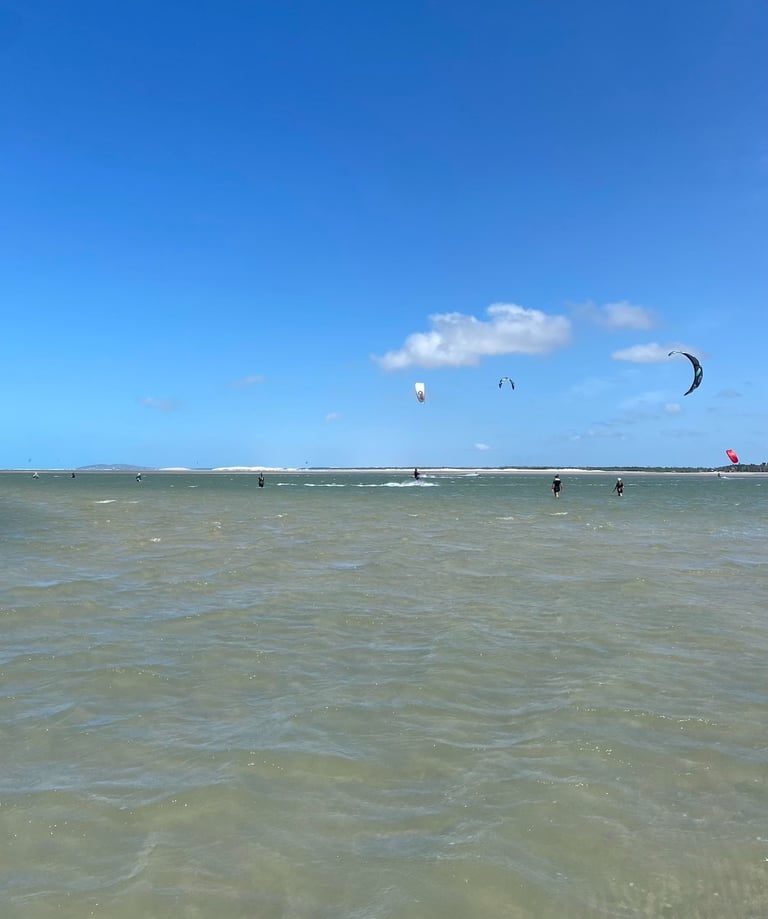

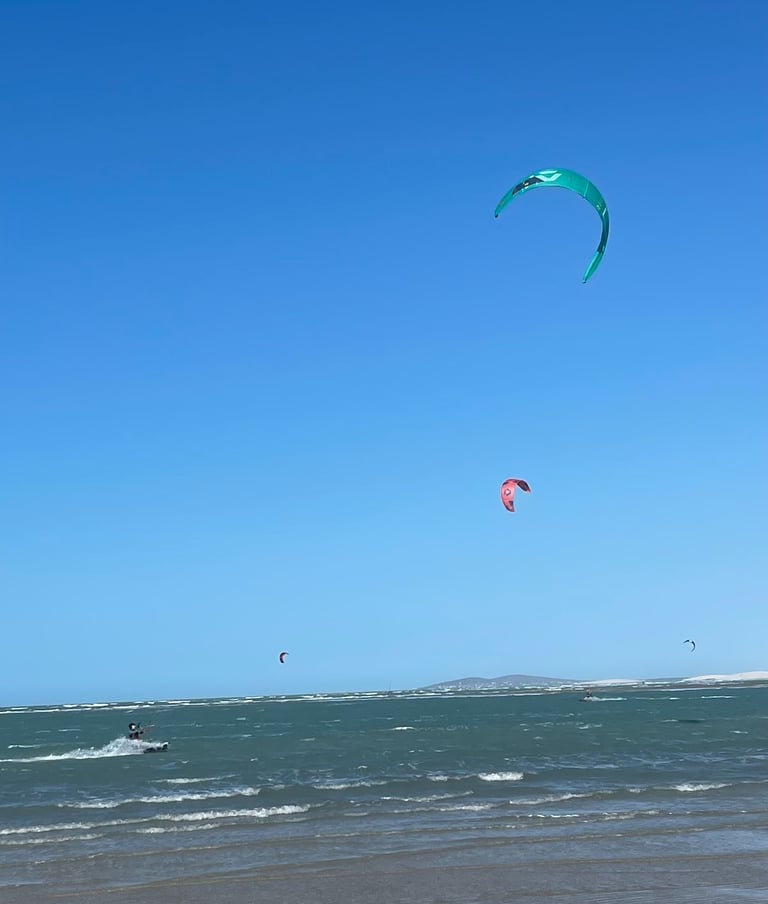

________________________________________________________________
Spot Description: Ponto de Apoio / Placa
Ponto de Apoio, also known as Placa, is located just a few minutes outside Jericoacoara towards Preá – right at the first beach section after the hill “Serrote.” The spot is about 5-7 minutes by car from Jeri and offers a combination of quick access, side-onshore wind, and plenty of beach space, especially at low tide. However, the spot is in general a bit rougher.
WIND AND WATER CONDITIONS
Wind direction: Consistent side-onshore wind from the right – the safest wind direction for beginners and independent kiters
Wind strength: Strong and reliable, as in the entire region
Current: Light to medium current in wind direction, caused by constant wind pressure
Water surface: Noticeable chop, no flatwater – small to medium shorebreak, though slightly less than in Preá
Wave action & shorebreak make the spot sportier – especially at high tide
SPOT CHARACTERISTICS
The spot is more open and rougher than our sheltered flatwater spots, but safe to kite thanks to the side-onshore wind
The access point features a simple hut (“Ponto de Apoio”) providing a wind-sheltered area as well as water from a local institution in Preá – convenient for short sessions or breaks
Due to its proximity to Jeri, the spot is reached very quickly, ideal for spontaneous sessions or as an endpoint for downwinders
The beach is wide and open, especially at low tide – perfect for setting up and launching with plenty of space
USAGE AND LESSONS
We only use this spot occasionally, as conditions are not particularly beginner-friendly
Chop, shorebreak, and current make it more demanding for lessons and entry-level practice
Teaching or relaxed sessions are only reasonable at low to mid tide in our opinion
At high tide, the shorebreak becomes stronger and the beach narrower, which reduces comfort and safety
SPECIAL FEATURES & ADVANTAGES
Very easy access: only about 5 minutes drive from Jericoacoara
Side-onshore wind direction provides a high level of safety
Hardly frequented: ideal for advanced kiters who want to ride undisturbed
Often used as an endpoint for downwinders, especially for those who prefer not to kite back around Serrote to Jeri but instead finish here and take a shuttle to Jeri or Preá
CONCLUSION
Ponto de Apoio / Placa is an easily accessible, straightforward kite spot with a rough character. The wind is strong and safe, the water choppy, and the shorebreak moderate. Only partly suitable for lessons, but a good option for experienced kiters – especially at low tide. As a quick, spontaneous session spot with excellent logistics and plenty of beach space, it’s a valuable addition to the kite area between Jeri and Preá.
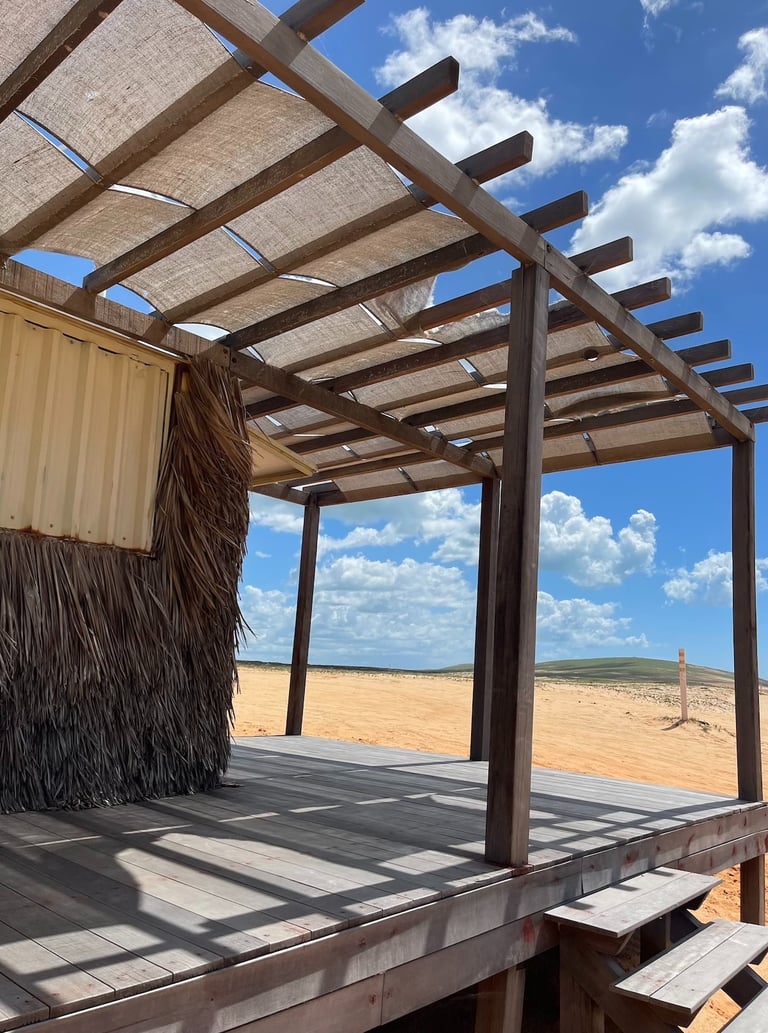

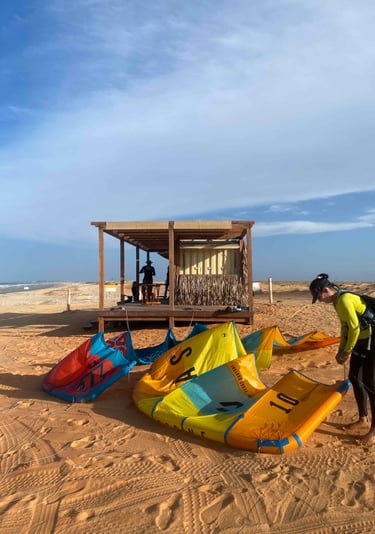

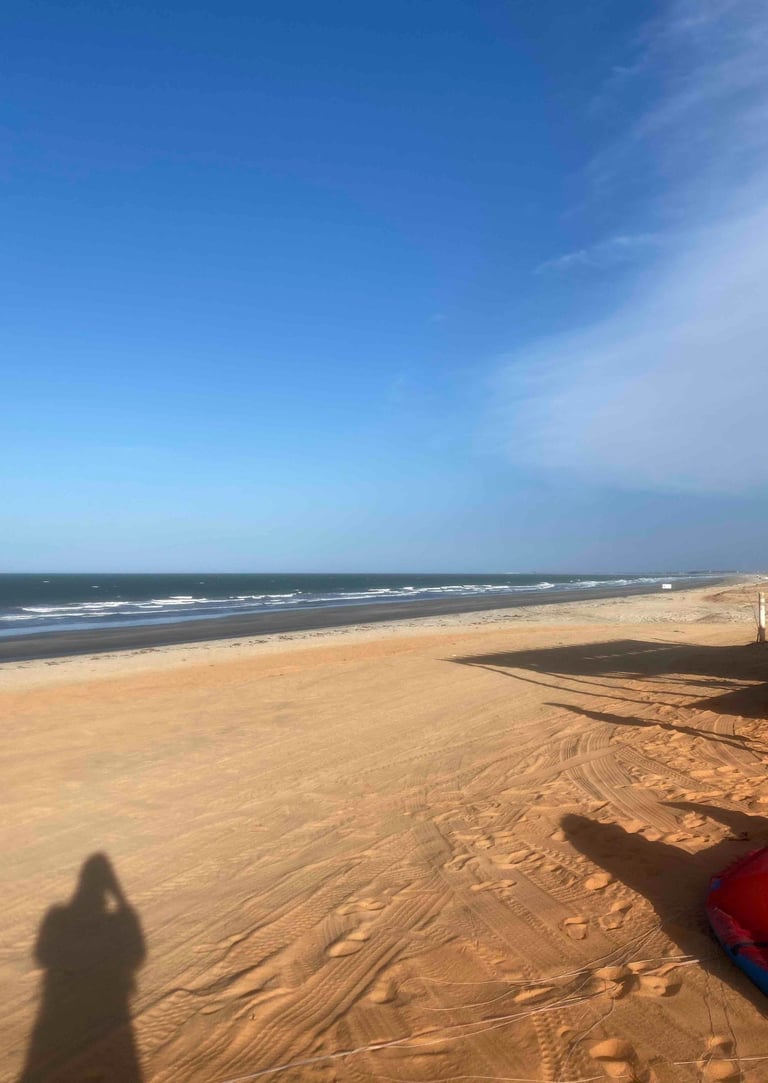

Spot Description: Jeri by the Dunes
Jeri by the Dunes, also known as Dunas por do Sol, is located right at the edge of Jericoacoara, directly in front of the large sand dunes. The spot is just 5 to 10 minutes away on foot or by car and is particularly suitable for beginner sessions on the first training day, or as a starting point for unforgettable downwinders along the coast.
WIND AND WATER CONDITIONS
Wind direction: Side-offshore – the wind comes over the dunes from the land, creating slightly gusty conditions
Wind strength: Reliable, but not fully consistent due to the topography
Water surface: At low to mid tide, the water is very shallow and calm, with little to no shorebreak
Water depth: Knee- to waist-deep (in low-tide conditions) – ideal for first steps flying a kite, less suitable for deep dunking into the water or big jumps
SPOT CHARACTERISTICS
Prime location right next to Jeri – great for spontaneous training or short 2-hour sessions
Car access possible, ideal for easy gear transport
The beach is wide and open, especially at low tide – plenty of space for setup and launching
Hardly any other kiters – very quiet spot, perfect for beginners or small groups
LESSONS & SAFETY
Although the wind is side-offshore, lessons are occasionally held here – especially on the first training day
Students stay in the shallow water and return to shore frequently – ideal for kite control, first body drags, introduction to self-rescue, and launch/landing training
Our instructors ensure no one goes too far out and maintain close visual contact
Boats from other schools or wingfoil crews are occasionally present and could assist in case of emergency
For advanced lesson days or more intensive riding, we switch to spots with steadier wind (e.g. Mangue Seco, Guriú)
SPECIAL ADVANTAGE: DOWNWINDER START POINT
Jeri by the Dunes is a popular starting point for downwinders to Guriú or further to Tatajuba etc.
This route is considered one of the most beautiful downwind runs in the region
Along the coastline of the National Park, you glide over flat water, sometimes right past the dunes – later crossing a small river mouth with kicker waves – a unique natural experience
Arriving in Guriú or later in Tatajuba is not only scenically impressive but also a sporting highlight thanks to the excellent spot conditions – one of the top experiences of any kite trip
CONCLUSION
Jeri by the Dunes is a versatile spot with unique local advantages: ideal for first training days, for short sessions right next to Jeri – and especially renowned as the gateway to one of the best downwinders along the coast. Despite slightly gusty side-offshore winds, the spot can be used carefully and is specifically chosen by our school for certain groups. Whether it’s your very first kite experience or the start of a legendary downwinder, this is a right place to be.
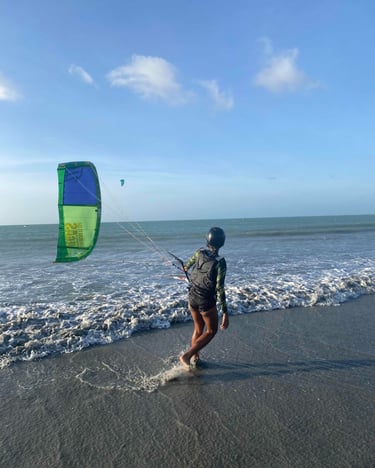

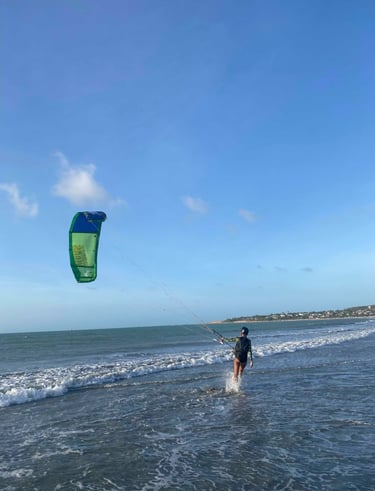

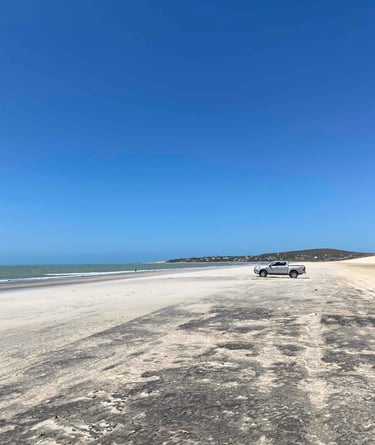

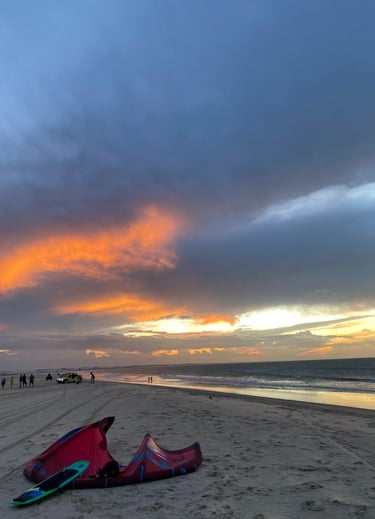

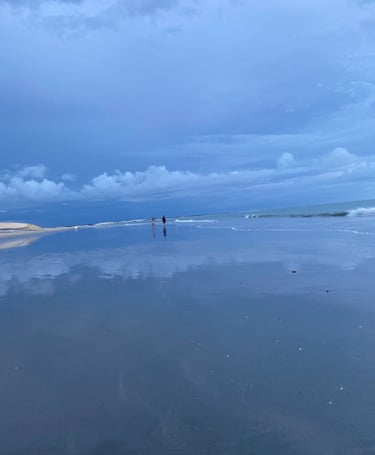

Kitespots nearby
Spot Description: Preá
Preá is located about 12 km southeast of Jericoacoara and can be reached by car in around 30–40 minutes. It is an open coastal spot with strong wind, rough water, shorebreak, and chop beyond the break. It is popular among kite schools, resorts, and downwinder enthusiasts and their clients. At the same time, the conditions are considered challenging and not particularly beginner-friendly. More on this below.
WIND AND WATER CONDITIONS
Wind direction: Consistent side-onshore from the right
Current: Clearly noticeable in wind direction (downwind), making upwind riding difficult for inexperienced riders
Water color: Often dark gray due to stirred-up sand and waves
Surface: Constantly choppy, regardless of low, mid, or high tide – there are never flatwater phases
Shorebreak:
Low tide: small, but still powerful
Mid tide: stronger with increasing force, can be intimidating (especially for newcomers)
High tide: steep breaking waves directly on the beach – frightening for beginners and risky for gear
Space:
At high tide the beach becomes very narrow, barely enough to lay out 22m lines or launch a kite
The spot is frequently crossed by vehicles (cars, quads, motorcycles) – often with little regard for kiters or equipment
LESSONS & LEARNING CONDITIONS
Lessons are regularly conducted in Preá, but under conditions that many experienced instructors do not consider optimal
I myself lived in Preá for a while and taught countless hours there as a freelancer – so I speak from personal experience
The shorebreak, constant current, and choppy surface significantly slow down the learning curve
It happens that beginners give up or quit frustrated because they cannot handle the conditions – or don’t know that easier alternatives exist. This is moreover true in high-tide condtions
It is also realistic that students need more days before they can safely get on the board and fully control their kite and board
There is a saying:
“If you learn to kite in Preá, you can kite anywhere.”
That may be true – just as it is for Tarifa or other demanding spots. But it also means you need more time, more hours, and not everyone even manages to get into kiting under such conditions.
INFRASTRUCTURE & USAGE
Many large resorts have established themselves in Preá, especially along the central beachfront
The spot is very busy, both on the water and on land – but hardly regulated (keyword: pirate schools)
Advertising by travel agencies and on social media has created strong visibility and hype – but this has more to do with aggressive marketing by local institutions than with the actual quality of the spot
Due to the high density of kiters, the spot often appears popular, especially during high season
The only truly good part of Preá (in our opinion)…
The downwind spot near the rocks at low tide, just downwind those rocks. Located just before entering Preá from Jeri. This area is technically still within the National Park jurisdiction and not actually Preá, but immediately nearby. Teaching in low-tide at this spot is very attractive due to the conditions (flat, or just little waves, side-onshore winds and no hazards (just the downwinders passing by here and there)
Preá is also an excellent starting point for downwinders – to Jericoacoara, Guriú, or even Tatajuba.
The downwinder from Preá to Jericoacoara is among the best in the region:
The wind angle is ideal along the 8 km stretch of beach – especially fun at mid tide
There is plenty of whitewater, perfect for fast, controlled riding - "racing downwind"
You ride along the coastline of the Jericoacoara National Park, with the Serrote at the end, empty beaches, and fantastic views
Along the way you pass the Arvore da Preguiça and the Pedra Furada rock formations, famous photo spots for tourists
The downwinder ends either with an exit at Praia da Malhada (only safe at mid-low tide), or by bypassing the village to land at the dunes of Pôr do Sol
A downwinder from Preá to Jericoacoara is a true highlight – adventurous, scenic, and emotional.
PERSONAL COMMENT ON SPOT USAGE
Personally, I almost never kite in Preá. Too much chop, no clean wave, and no flat sections. In my opinion, the hype around Preá is the result of marketing and resort interests – not the spot’s real quality. Many people who are taken from Jeri to Preá end up facing conditions that are worse than nearby alternatives. I genuinely feel sorry for newcomers who make all the trip from Jeri to Prea only to encounter these challenging waters.
This is not just my view only – it is often shared by experienced kiters and instructors on site.


